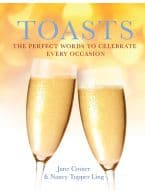Author Archives:Lydia Sampson

29
MarEscaping to Alcatraz
 I spent some time behind bars recently. It was my second stint in the slammer in three years, and I don’t plan on returning any time soon. I’m talking about my recent trip to Alcatraz while visiting my daughter and son-in-law in San Francisco. I had a macabre desire to tread the concrete and steel corridors of the most notorious prison in America one more time.
I spent some time behind bars recently. It was my second stint in the slammer in three years, and I don’t plan on returning any time soon. I’m talking about my recent trip to Alcatraz while visiting my daughter and son-in-law in San Francisco. I had a macabre desire to tread the concrete and steel corridors of the most notorious prison in America one more time.
The ferry departed from Pier 33 in mild-for-March sunshine for the 1.4-mile trip to The Rock. Minutes later, buffeted by a raw wind, we were completely enveloped in fog. Not until we arrived at the Alcatraz dock did the fortress materialize through the mist.
As I trudged up the hill to the main cellblock, the chill I felt wasn’t just from the cold. I thought of the island’s three most infamous inmates—Al “Scarface” Capone, Robert “The Birdman” Stroud, and George “Machine Gun” Kelly–making that same trek, only in handcuffs and leg irons. And with no round-trip ticket back to the mainland.
Thousands of years before the most hardened, incorrigible convicts in America were imprisoned on “Hellcatraz,” Native Americans paddled out to the island to fish and collect bird eggs. In 1775, Spanish sailors came across the 22-acre landmass and named it Isla de los Alcatraces after a species of cormorants found in Spain.
After the U.S. acquired California from Mexico, the first lighthouse on the West Coast was built on Alcatraz in 1854 to guide ships into San Francisco’s harbor at the height of the Gold Rush. That same year, construction began on an army post and Hopi Indians and Civil War convicts were detained on the island. In 1907 the military fort closed and the “disciplinary barracks” became a minimum-security prison. When FBI director J. Edgar Hoover announced the need in the 1930s for a “super prison” in which to incarcerate the country’s most recalcitrant criminals, Alcatraz was it. But after only 29 years, the crumbling facility was deemed too expensive to maintain and the last prisoner departed in 1963. The island’s colorful history, however, continued.
Beginning in 1969, the Tribes of all Nations occupied the island for 19 months to protest two centuries of mistreatment by the U.S. government. In 1972, Alcatraz became part of the Golden Gate National Recreation Area. The first tourists arrived on The Rock the following year. And almost half a century later, I joined the nearly two million annual visitors to see the legendary penitentiary for myself.
Back at Cellblock B, I plugged in to the excellent self-guided audio tour narrated by former inmates and guards. I wandered down the dank corridor lined with three stories of claustrophobic single-person cells, known as Broadway, where prisoners were locked in for at least 13 hours a day—longer when fog obscured the guards’ direct line of fire outside. I jumped the first time I heard the noise of multiple cell doors slamming shut simultaneously. From my trusty Fodor’s San Francisco guidebook I learned that George Lucas recorded the sound of those same prison doors banging shut in his “Star Wars” blockbuster. I see where the term “slammer” originated.
Former Alcatraz inmate Jim Quillen described the island as cold, gray, lonely, and haunting. When the wind blew in a certain direction, according to Quillen, you could smell the Italian cooking in North Beach and hear the laughter of women and children, which he admitted was nearly intolerable. Maybe it was better to be enshrouded in fog after all.
While your America the Beautiful National Park Pass won’t get you into Alcatraz for free, the entrance fee does include a brief stay in a solitary confinement cell of your choice. I tentatively stepped inside and shut my eyes. One prisoner recalled how he would flip a button and crawl around in the dark until he found it, repeating the process multiple times in an effort to relieve the isolation and monotony of a stint in “the hole.”
The day before our Alcatraz excursion, the general manager of the Fairmont San Francisco spotted us ogling the photographs of the hotel’s many celebrity guests and offered us a peek at the penthouse suite–clearly a slow day on the job. The view from the terrace overlooking the bay was spectacular—and terrifying. Upon hearing that Sean Connery tossed the luckless FBI agent over that very same balcony in the 1996 film “The Rock,” we had to snap a selfie. You too can check out that scene as well as another film playing fast and loose with actual facts– “The Birdman of Alcatraz”–at the Norwood Library.
I found the accounts of escape attempts particularly fascinating. In the 1946 Battle of Alcatraz, six prisoners hatched a plan to disarm their captors and escape through the recreation yard. Several guards were locked in a cell, but when the key to the prison yard was not forthcoming the desperate inmates opened fire, killing two officers. The Marines were brought in, eventually ending the uprising but inadvertently killing a guard still inside the cellblock. Three ringleaders died during the fighting, two were executed for murder, and a 19-year-old accomplice, whose life was spared, was sentenced to an additional 99 years.
Not all the residents’ efforts to, ah, relocate, were bloody. In the most elaborate break-out attempt, three convicts fashioned tools from spoons and made drills with which to widen the vents in their cells leading to the utility corridor. From there they crawled up the pipes to the roof and down a drainpipe to the ground, using a raft made from prison raincoats to navigate the frigid currents to freedom. Their fate remains a mystery.
The mystique of Alcatraz has become part of the American culture. If your own visit piqued your curiosity or you prefer to experience the “pen” vicariously, the library can aid and abet. “Alcatraz Screw: My Years as a Guard in America’s Most Notorious Prison,” by George H. Gregory, says it all. For a first-hand look at life behind bars, read Jim Quillens’ chilling “Inside Alcatraz—My Time on the Rock.”
Perhaps the most heartwarming depiction of the prison as playground is Jolene Babyak’s “Eyewitness on Alcatraz,” in which she recalls an idyllic childhood as the daughter of the acting warden. In “Children of Alcatraz: Growing Up on the Rock,” Claire Rudolf Murphy portrays the stark island as a safe haven where families never locked their doors, kids played hide and seek in the prison morgue, and became friendly with some of the prisoners.
Whether you’re in the mood for a feel-good story of the sunnier side of Alcatraz or a foray into the most fearsome prison of all time, escape to the Morrill Memorial Library to immerse yourself in the enduring drama of life and death on The Rock.
April Cushing is the Adult and Information Services Supervisor at the Morrill Memorial Library in Norwood, Mass. Read April’s column in the March 29th edition of the Norwood Transcript & Bulletin.

22
MarIt Doesn’t Hurt to Ask
 Funny thing! My Dad told me this a lot growing up: “Go ahead! It never hurts to ask!” As a shy child, I wasn’t so sure. Secretly I hoped things would work out on their own so I wouldn’t need to say a word. Requesting information, like “how much does that movie cost,” or “where do you shelve the toilet paper,” took a monumental dose of bravery on my part. I am the model child for Susan Cain’s book Quiet.
Funny thing! My Dad told me this a lot growing up: “Go ahead! It never hurts to ask!” As a shy child, I wasn’t so sure. Secretly I hoped things would work out on their own so I wouldn’t need to say a word. Requesting information, like “how much does that movie cost,” or “where do you shelve the toilet paper,” took a monumental dose of bravery on my part. I am the model child for Susan Cain’s book Quiet.
Whether we like it or not, life provides opportunities to stretch ourselves, even on a daily basis. Contrary to popular belief, I don’t stick my head into books all the time as a librarian. I am called to be social and help our patrons. Likewise a big part of my day is spent answering patrons’ questions, which means asking a few of my own. And, as I’ve discovered, asking the right question at the right time can sometimes bring surprising results.
Case in point, several years ago I asked a question that changed my life. For years I’d submitted my poetry to June Cotner’s anthologies. When several of my poems first appeared in Baby Blessings, I was over the moon. After that first acceptance, June and I began corresponding regularly and she soon became my mentor in so many ways.
Then in the summer of 2012 I discovered I’d be heading from Boston to Seattle for a writers’ retreat. At last June and I were to meet in person! Before my trip June happened to mention that she was overwhelmed with work because her assistant had recently moved away. Without hesitation, I asked the simplest of questions: “June, is there any little thing I can do to help you from the East Coast?” I thought I might assist her by reading a few of the many submissions she receives regularly.
I was completely shocked by her answer. “Well Nancy, how would you like to coauthor a book together?” I don’t think anything could have knocked my socks off more. I could barely reply with a “Wow!” and a “Really?” and yet my travels to Seattle began a new phase in our relationship. We were becoming coauthors! Of course, that initial question was followed by many more. What project should we work on first? How should I gather entries to our anthology? Who would we submit our proposal to?
As it turns out, Toasts: The Perfect Words to Celebrate Every Occasion was our first book together. June graciously walked me through every step of the way. While I’d written poetry and children’s books before, this was a whole new experience for me. I had so much to learn. What am I talking about? I am still learning.
This New Year’s Day we signed a contract with Andrews McMeel for our second co-authored book entitled Family Celebrations, and thanks to the fabulous work of our agent, Anne Marie O’Farrell (Marcil-O’Farrell Literary LLC), we are excited to say our first children’s anthology, For Every Little Thing, has been accepted by Eerdman’s Publishing. On top of that, we have co-authored a children’s manuscript called Be Creative that my agent, Ammi-Joan Paquette (Erin Murphy Literary Agency) is shopping around.
Yes, I have to say, I find that I am pinching myself on a regular basis these days. Could this all be real? It is hard to believe this long and winding road to publication is part of this shy girl’s journey. To think it all began with a question, or maybe two or three. What do you think about that?
Come check out the books mentioned in this article at our library, including Quiet by Susan Cain.
And here are a few other titles that you can find in our library. They may help if you are thinking about writing or publishing a book of your own in various genres:
Fiction, the Art and Craft of Writing and Getting Published by Michael Seidman
The Magic Words: Writing Great Books for Children and Young Adults by Cheryl B. Klein
The New Writer’s Handbook: A Practical Anthology of Best Advice for Your Craft and Career, edited by Philip Martin.
Steering the Craft: A 21st-Century Guide to Sailing the Sea of Story, by Ursula K. Le Guin
The True Secret of Writing by Natalie Goldberg
Nancy Ling is the Outreach Librarian at the Morrill Memorial Library in Norwood, Massachusetts. Read Nancy’s column in the March 22nd issue of the Norwood Transcript and Bulletin.

15
MarHer Truth is Marching On
 Happy National Women’s History Month! I’m writing this article on March 8, which is celebrated by men and women around the world as International Women’s Day, or IWD. March has been officially designated as National Women’s History Month since 1987 in the United States, but IWD has been celebrated since 1911 and can trace its roots back to political action by women in New York in 1908. According to internationalwomensday.com, “International Women’s Day (March 8) is a global day celebrating the social, economic, cultural and political achievements of women. The day also marks a call to action for accelerating gender parity.” IWD is not as well-known in the United States. However, it is an official holiday in other countries, with men and boys honoring their wives, mothers, sisters, colleagues, etc. with flowers and small gifts. In some places, the day is treated as the equivalent to Mother’s Day.
Happy National Women’s History Month! I’m writing this article on March 8, which is celebrated by men and women around the world as International Women’s Day, or IWD. March has been officially designated as National Women’s History Month since 1987 in the United States, but IWD has been celebrated since 1911 and can trace its roots back to political action by women in New York in 1908. According to internationalwomensday.com, “International Women’s Day (March 8) is a global day celebrating the social, economic, cultural and political achievements of women. The day also marks a call to action for accelerating gender parity.” IWD is not as well-known in the United States. However, it is an official holiday in other countries, with men and boys honoring their wives, mothers, sisters, colleagues, etc. with flowers and small gifts. In some places, the day is treated as the equivalent to Mother’s Day.
No single organization is responsible for overseeing IWD celebrations and activities, but instead groups in different countries coordinate their efforts to push for similar causes. Political action and popularity of IWD has waxed and waned with the feminist movement, and is currently seeing a resurgence in activity, most likely influenced by the recent Women’s March and #MeToo movements.
What has put women’s history on my mind? Calendar of global and national events aside, I was recently asked to be a reader and reviewer for a prestigious award for local authors, the Julia Ward Howe Award. Awards are given in the categories of Fiction, Nonfiction (the category for which I’m reading), Poetry, and Young Readers, by the Boston Authors Club. The award is named for the club’s first president.
The Boston Authors Club was unique in its time in that both women and men were members. In 1886, a group of men authors in Boston discussed forming such a club, but were unable to agree about the inclusion of women, and efforts to form the club dissolved. In 1899, several women authors met to discuss the idea of an author’s club in Boston. They agreed that it was a splendid plan and approached some of their male colleagues to join them. Soon, the Boston Authors Club was formed and Julia Ward Howe was elected the first president.
You almost certainly know of Julia Ward Howe’s work, even if you didn’t realize it. She wrote the poem, “The Battle Hymn of the Republic,” which was then set to the music of “John Brown’s Body” composed by William Steffe. The song “John Brown’s Body” was popularized as the Union Army’s marching song in the American Civil War, and today “The Battle Hymn of the Republic” is a national anthem, of sorts. Her publication of “Battle Hymn” in 1861 brought her immediate celebrity, and she became one of the most famous women in 19th century America.
Howe was a writer of fiction, travel and children’s books, poetry, plays, essays, and articles. She was born to privilege in New York City in 1819 and married young. A series of poor business decisions by her husband and male family members lost most of her wealth, though, and as a widow she worked to earn a meager living. Howe had seven children and was instrumental in the creation of Mother’s Day.
The women’s suffrage movement was Howe’s biggest consideration, and she worked tirelessly writing, lobbying, and editing journals and magazines to spread information and promote her causes. She was also an abolitionist and social and human rights activist, worked to promote world peace, and was at the forefront of gender and sexual politics. In short, Julia Ward Howe was a strong feminist activist before feminism was even a widely used term.
Howe was an ambitious, outspoken, fiery poet, but was ahead of her time in the 1800s. Her husband was autocratic and patriarchal, and was dismayed to find he hadn’t married a demure, decorous wife. He threatened to leave Julia and take their children after she anonymously published a volume of poems called “Passion Flowers” which alluded to intimate personal details of their married life. Julia continued her activist work but scaled back certain aspects, and today is best remembered for “Battle Hymn”
Boston has always been a literary firebrand of a city, and we can proudly claim Julia Ward Howe as one of our foremothers. To learn more about Howe’s fascinating life and work, visit the library to check out “The Civil Wars of Julia Ward Howe,” by Elaine Showalter, or “The Vintage Book of American Women Writers,” edited by Elaine Showalter.
Liz Reed is an Adult and Information Services Librarian at the Morrill Memorial Library in Norwood, Massachusetts. Read Liz’s column in the March 15, 2018 issue of the Norwood Transcript and Bulletin.

8
MarFlip Turn the Page
 There’s something about jumping into cold pool water early in the morning. I love the sensation of pushing off the wall as I make my turn. I enjoy the soreness in muscles the day after a hard workout. I am even beginning to like the smell of chlorine on my skin. It reminds me that I earned my breakfast. All that said, there are days when I can’t stop counting down the minutes until I can hit the showers. Invariably, those are days when I run out of battery.
There’s something about jumping into cold pool water early in the morning. I love the sensation of pushing off the wall as I make my turn. I enjoy the soreness in muscles the day after a hard workout. I am even beginning to like the smell of chlorine on my skin. It reminds me that I earned my breakfast. All that said, there are days when I can’t stop counting down the minutes until I can hit the showers. Invariably, those are days when I run out of battery.
I began swimming again when injury prevented me from cycling over a year ago. I saw it as a last-resort activity; something to hold me over until I could get back on the bike. So I signed up for a pool membership over at Westwood High School and forced myself into the water every morning before work. While my body slowly remembered proper freestyle form and how to make a decent flip turn between lengths of backstroke, I couldn’t shake the boredom.
My complaints must have been more vociferous than I realized, because I found a very tiny box under the Christmas tree that year with explicit instructions to use while swimming. My sister and brother-in-law (both swimmers) had given me a waterproof iPod shuffle that clips to a swimmer’s goggle straps.
My brother-in-law explained that bad pop music was the only thing that got him through hours of Ironman training and that my time in the water was about to improve dramatically. After an afternoon of selecting the perfect playlist and downloading an audiobook from Overdrive, I excitedly put in my earbuds and began my swim. I started with my audiobook…and quickly became very confused. Unbeknownst to me, I had selected “shuffle” mode, so my book was jumping all over the place. One moment, the protagonist was a small child and then two minutes later she was a grandmother, and then there would be a musical interlude featuring Lady Gaga. This was not working.
Once I figured out my mistake, I re-evaluated the content on this miniature MP3 player, determining that music and single track spoken audio is best. Podcasts and upbeat music became the order of the day. I am always excited to load new content and can’t wait to get into the pool to explore a new album or episode. Here are some of my recent favorites:
Ogogo by Mike Gordon is the newest offering from the Phish bassist. My husband has loved Phish for longer than he has loved me, but I’m barely a casual fan. The jams are too long and the music, though skillful, is too weird at times. This album is not that. It is synth-heavy pop that just makes you want to get moving.
Speaking of beats that keep you going long after others might have let you quit, I just can’t get enough of William Onyeabor. This master of Nigerian funk was a big deal in Nigeria in the late 1970’s but has only recently come onto my radar. I just ordered the album World Psychedelic Classics 5: Who is William Onyeabor for the library, so make sure to get yourself on the list. Start with the songs Atomic Bomb and Fantastic Man and you won’t be disappointed.
If I just need a few songs to get me through the last 1000 yards, I go straight to my “That’s My Jam” playlist. It starts with Redbone by Childish Gambino, Dirt off Your Shoulder by Jay-Z, and Power by Kanye West. Then I go full on pop-goddess with just about anything from Halsey, Sia, and Lady Gaga. I finish up with some old rock staples like Everlong and The Pretender by the Foo Fighters and my longtime favorite, Eminence Front by The Who.
Sometimes I want something that isn’t music. This is where podcasts fit in. I pick podcasts with episodes that are roughly the same length as a typical workout, so while I love longer podcasts like Dan Carlin’s Hardcore History, I am definitely not staying in the pool for 5 hours learning all about the demise of the Celts or Alexander the Great. Those are for cleaning the basement.
My ultimate favorite is Radiolab. This podcast explores a variety of topics related to science and culture. At about 40 minutes long, Radiolab is the perfect length for a before work swim. It lets my brain warm up for the day, while I do the same with my body.
If I need something funnier, Two Dope Queens is my go-to. I am in love with the hosts, Phoebe Robinson and Jessica Williams. These comedians leave no topic untouched, sharing stories about relationships, city living, pop culture, current events, fashion, and just about everything in between.
As people who know me well will tell you, I live for sports. If it involves a ball, a racquet, throwing myself down a mountain, or any other fun way to use my body, I will be first in line to give it a shot, so I couldn’t write about podcasts without including one of my favorite sports themed series. EPSN’s 30for30 podcasts are amazing. They delve in depth into a variety of sports stories. Some are inspirational, others explore the dirty underbelly of sport. There aren’t many of them, but they are worth waiting for.
Very long story short, my brother-in-law was right, what’s playing in my ears totally changed how I feel about my workout. As I learned, it can be tricky to get digital content onto your device to fuel your workout. Even if you think my music taste is rubbish, I would be happy to help you load your favorite tunes and podcasts onto your device. If you can’t find me at the library, check the Westwood pool. I’ll be the one dancing at the wall between sets.
Alli Palmgren is the Technology Librarian at the Morrill Memorial Library in Norwood, Massachusetts. Read Alli’s column in the March 8, 2018 issue of the Norwood Transcript and Bulletin.

1
MarGetting to Know the Forbes Mansion
 The Town of Norwood’s recent real estate purchase crowns the top of a hill at the end of a long curving road without a street name. The tree-lined approach reveals a stately Georgian Revival manor with a well-preserved exterior and sprawling grounds ideal for summer garden parties and croquet. Buying the property did not escape controversy, but officially owning it now warrants a glimpse into the mansion’s history.
The Town of Norwood’s recent real estate purchase crowns the top of a hill at the end of a long curving road without a street name. The tree-lined approach reveals a stately Georgian Revival manor with a well-preserved exterior and sprawling grounds ideal for summer garden parties and croquet. Buying the property did not escape controversy, but officially owning it now warrants a glimpse into the mansion’s history.
According to Patricia Fanning’s Norwood: A History, W. Cameron Forbes’ home was built between 1914 and 1916, and the accompanying hundreds of acres of land included farms, greenhouses, a sawmill, an orchard and a cider mill. Many locals worked on the estate, and Norwood residents enjoyed activities such as camping and hunting on the grounds. Mr. Forbes made one important alteration though: the establishment of a proper polo field to accommodate his beloved pastime. Fanning notes that the house contained a “pony parlor” indoors for the horses. A tunnel, now sealed up with stone, led the animals out to the fields in grand fashion. Forbes’ favorite pony rests in peace buried beside the mansion, with a plaque in his honor.
When Forbes served as Governor-General of the Philippines, he shipped exotic hardwoods home, detailing the mansion with walls, ceilings and doors made from rare and beautiful varieties of wood. Unfortunately this preceded today’s regulations and environmental protections, and many of the trees he used, such as molave and tindalo, have since gained the status of endangered or threatened species. Old photos show the rooms adorned with hardwood furniture, artwork, taxidermy, and curios from abroad on display under bell jars. Today almost none of this remains in situ.
In the early 1950s before his death, W. Cameron Forbes donated his estate to Harvard University, which in quick turnaround sold it to the United Fruit Company. The company maintained the grandeur of the mansion, while making adjustments for adding greenhouses, growing bananas, and studying insects. According to Fanning, Norwood once boasted “the largest banana research facility outside the tropics.” While scientists from the Boston area’s top universities labored at building a better banana, the parent company was up to more nefarious business abroad.
The book, Bananas: How the United Fruit Company Shaped the World, by Peter Chapman, describes the company’s historical alignment with the U.S. government and frequent role in dictating the fate of banana-growing countries in Latin America. United Fruit supplied ships for the Bay of Pigs invasion. For decades it took advantage of cheap labor abroad and mistreated poor workers, paying a pittance, often in company scrip instead of the country’s currency.
Ecologically, much of United Fruit’s acclaimed banana research ultimately backfired. The company, with help from the Forbes Mansion research team, made the fruit suitable for mass production. They experimented with pesticides, fungicides, and fertilizers until plantations throughout Latin America were succumbing to disease, and disease-prevention made the industry increasingly less profitable. Back in the U.S. the scientists attempted to diversify the company, experimenting with dehydration methods and research on other fruits, but the United Fruit banana monopoly dwindled.
According to Bryant Franklin Tolles, Jr.’s book, Norwood: The Centennial History of a Massachusetts Town, Polaroid purchased the Forbes estate in 1967 and soon after constructed a camera manufacturing plant on the grounds. The company took care to protect the natural environment and landscaping of the grounds where polo ponies once competed, while using the house for corporate offices. In the 1990’s when digital cameras came into popularity and demand for “Polarioids” declined, Putnam Investments purchased the mansion and its land for offices and trainings, as explained by Fanning.
I had the privilege of visiting the Forbes Mansion when a few of the Library’s staff received an invitation to see and review the house’s library. In the home that originally had 30 rooms, the Library alone remains largely unchanged. The two-floor balconied room, lined floor to ceiling with bookshelves on all sides provides a small glimpse into what the mansion looked like originally. We did not see many books from Forbes’ time, about polo or the Philippines, or books from the United Fruit era, on agriculture and entomology. While the shelves look beautiful filled with reading material, the books themselves represent a more recent era.
The rest of the house has uniform neutral walls and carpeting, wiring for computers and audiovisual equipment, and almost no trace of the old hardwood or artwork that once graced the mansion. We don’t know whether United Fruit, Polaroid, or Putnam bear responsibility for “modernizing” the house and decreasing its character, but likely all three made changes and renovations over time.
A Boston Globe article from the 1950s indicates that Harvard offered to sell the mansion to the Town of Norwood before United Fruit bought it, but the town declined, due to the expenses anticipated for upkeep and maintenance. Now, decades later, we do own the Forbes Mansion, and what the Town will do with it remains up in the air, but my one hope is that the Library remains intact.
Lydia Sampson is the Technical Services department head at the Morrill Memorial Library in Norwood, Massachusetts. Read Lydia’s column in the March 1, 2018 edition of the Norwood Transcript and Bulletin.
